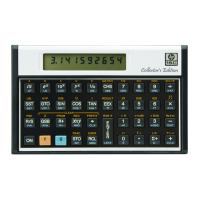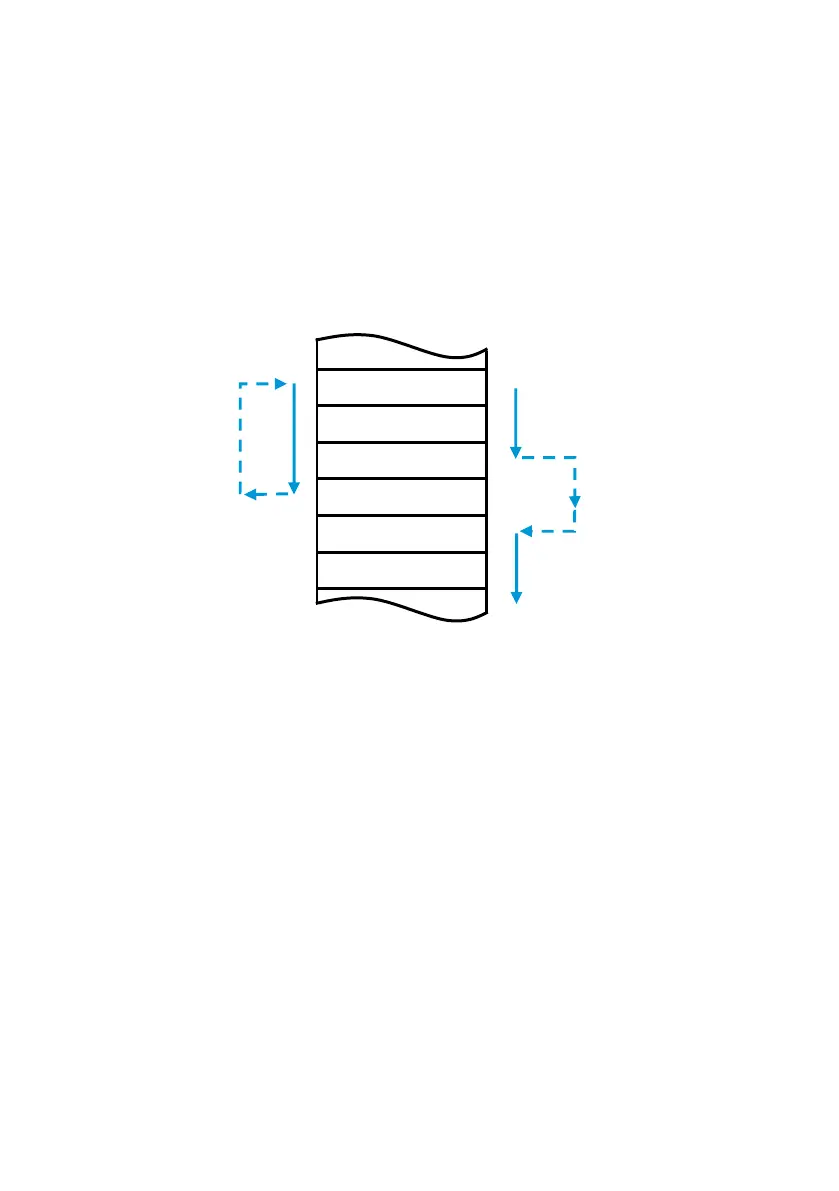92 Section 8: Program Branching and Controls
Following a conditional test, program execution follows the “Do if True”
Rule: it proceeds sequentially if the condition is true, and it skips one
instruction if the condition is false. A t instruction is often placed
right after a conditional test, making it a conditional branch; that is, the
t branch is executed only if the test condition is met.
Program Execution After Test
If True If False
015-´ b .1
016-
017-| £
018-t .1
019-
020-
Flags
Another conditional test for programming is a flag test. A flag is a status
indicator that is either set (= true) or clear (= false). Again, execution
follows the “Do if True” Rule: it proceeds sequentially if the flag is set, and
skips one line if the flag is clear.
The HP 15c has eight user flags, numbered 0 to 7, and two system flags,
numbered 8 (Complex mode) and 9 (overflow condition). The system flags
are discussed later in this section. All flags can be set, cleared, and tested
as follows:
| F n will set flag number n (0 to 9).
| " n will clear flag number n.
| ? n will check if flag n is set.
A flag n that has been set remains set until it is cleared either by a "
n instruction or by clearing (resetting) Continuous Memory.

